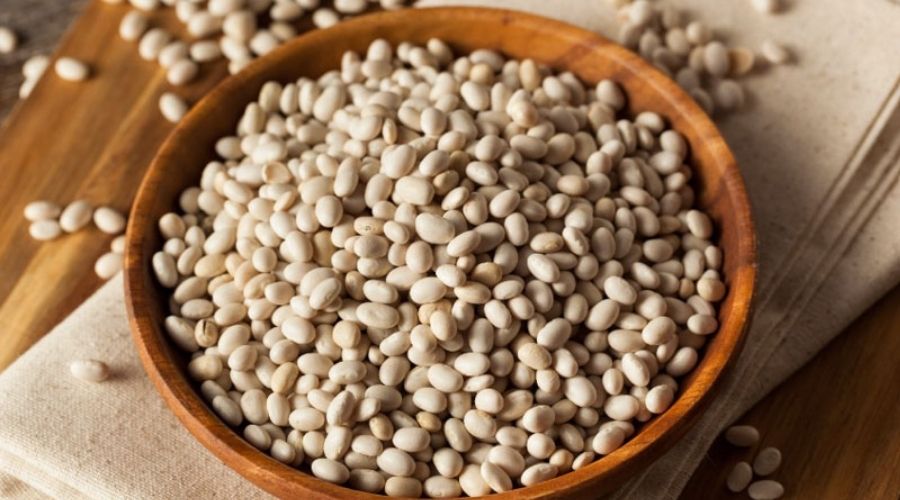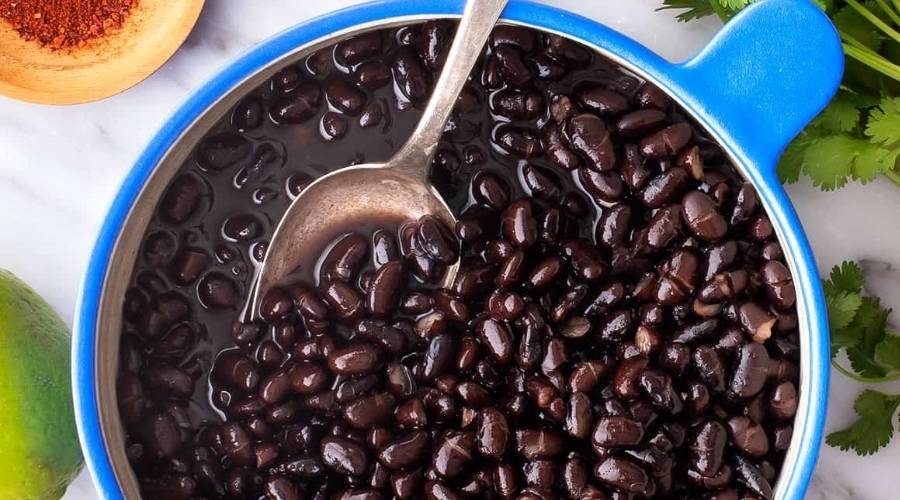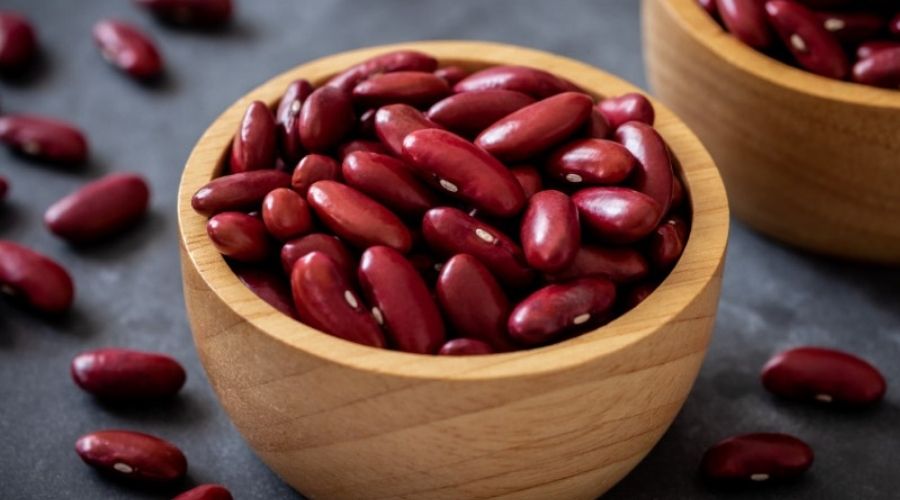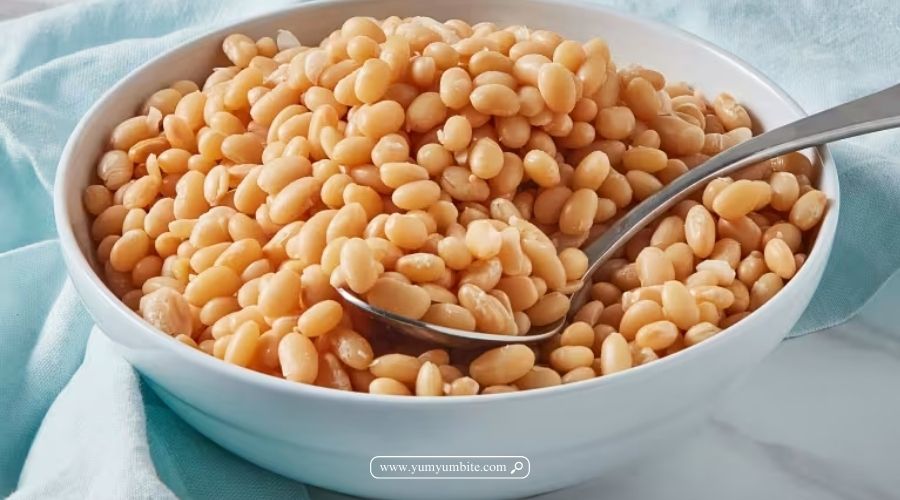Haricot beans, also known as navy beans, are a staple in many comforting recipes due to their creamy texture and mild flavor.
However, there are times when you might find yourself in need of a substitute, whether due to dietary restrictions, a lack of availability, or simply a desire to experiment with new flavors.
Fortunately, there are numerous alternatives to haricot beans that can seamlessly integrate into your favorite dishes.
In this blog, we’ll explore over 12 fantastic haricot bean substitutes that can offer similar textures and flavors or even bring exciting new twists to your recipes.
From versatile pantry staples like cannellini beans and lentils to more unique options like fava beans and chickpeas, you’ll discover a range of substitutes that can keep your meals delicious and satisfying.
12+ Best Substitutes for Haricot Beans to Elevate Your Recipes
Finding a suitable substitute for haricot beans opens up a world of culinary possibilities.
Whether you’re adapting to dietary needs, working with what you have on hand, or simply looking to try something different, there are plenty of options to choose from.
Each substitute brings its own unique flavor and texture to the table, allowing you to customize your dishes to suit your preferences or experiment with new recipes.
Cannellini Beans
Cannellini beans are a great substitute for haricot beans due to their similar texture and mild, creamy flavor.
These white beans are slightly larger than haricot beans but work well in recipes that require a smooth consistency, such as soups, stews, or casseroles.
Cannellini beans hold their shape well during cooking, making them ideal for dishes that need beans to retain some firmness.
However, they do absorb flavors a bit more slowly than haricot beans, so you might need to simmer them for a little longer to fully infuse the dish with the desired taste.
They are a particularly good choice for Italian-inspired dishes like minestrone or white bean salads.
Navy Beans

Navy beans are a close match to haricot beans in both size and texture, making them a perfect alternative.
Known for their soft texture when cooked, navy beans are great in baked bean recipes, soups, and chili.
They also absorb flavors well, making them versatile for a variety of dishes.
A word of caution: because navy beans can become very soft when cooked for long periods, they might lose their shape in slow-cooked dishes.
Therefore, they’re best suited for recipes where a creamy texture is desired, such as purees, dips, or hearty soups.
Also Read: 12+ Versatile Substitutes for Diamond Crystal Kosher Salt in Your Cooking! – My Blog
Great Northern Beans
Great Northern beans are slightly larger than haricot beans but share a similarly mild, nutty flavor.
These beans are firm enough to hold up in slow-cooking recipes like stews, braises, or bean salads, where you want the beans to remain intact.
While they do not become as creamy as haricot beans, their firmer texture adds a pleasant bite to dishes.
Be cautious of their cooking time, as Great Northern beans may require a bit more simmering to achieve the same tenderness as haricot beans. They are excellent for bean soups, vegetable stews, or mixed bean salads.
Butter Beans (Lima Beans)
Butter beans, or lima beans, can be a suitable substitute for haricot beans, particularly in recipes that call for a creamier, richer texture.
These beans have a slightly buttery flavor, which complements dishes like casseroles, soups, or side dishes.
They tend to break down more during cooking, making them a good option if you’re looking for a softer, melt-in-your-mouth texture.
However, because they are larger and have a more distinct flavor, butter beans may overpower delicate dishes. They’re best suited for hearty stews, creamy bean spreads, or baked dishes where a rich, smooth texture is desired.
Chickpeas (Garbanzo Beans)
Chickpeas can be a versatile substitute for haricot beans, especially in recipes where a firmer, nuttier texture is preferred.
They have a slightly earthy flavor that works well in salads, soups, and stews.
Chickpeas are particularly suitable for Mediterranean or Middle Eastern dishes, like hummus or falafel, where their robust texture can hold up well.
However, chickpeas are larger and firmer than haricot beans, so they may not provide the same creamy consistency.
If you’re making a dish that requires a softer texture, like a bean puree or mash, you may need to cook the chickpeas longer or mash them thoroughly.
Also Read: 12 Delicious Dolcelatte Cheese Substitutes for Your Cooking Needs!
Black Beans

Black beans are a flavorful and hearty substitute for haricot beans, especially in Latin American and Southwestern cuisines.
Their earthy, slightly sweet taste pairs well with spicy dishes like chili, burritos, or bean salads.
While they are darker in color and have a more robust flavor than haricot beans, black beans provide a satisfying, meaty texture that works in hearty soups and stews.
The key caution here is the difference in color and flavor, which could change the visual appeal and taste of more delicate recipes.
Black beans are ideal in dishes where a stronger flavor is welcome, but they may not be suitable for light or subtle-flavored meals.
Pinto Beans
Pinto beans are another good substitute for haricot beans, especially in dishes where you want a slightly creamy texture with a mild flavor.
These beans are commonly used in Mexican dishes such as refried beans, chili, or burritos.
Pinto beans are similar in size to haricot beans but are speckled and have a bit more earthiness in their flavor.
They break down easily when cooked, which makes them great for creamy soups or mashed bean dishes.
Be aware that their flavor is slightly stronger than haricot beans, so they might alter the overall taste of more neutral recipes.
Adzuki Beans
Adzuki beans, smaller and slightly sweeter than haricot beans, can be a unique substitute in certain dishes, particularly in Asian-inspired recipes.
They are often used in sweet dishes, but they also work well in savory recipes like soups, salads, and even stir-fries.
Their sweetness can complement spiced or tangy flavors, making them a great option for dishes with complex flavor profiles.
However, because of their distinct sweetness, caution should be exercised when substituting them in dishes where a more neutral bean flavor is required.
Adzuki beans are best used in savory-sweet recipes, such as grain bowls or vegetable stews, where their sweetness enhances the dish rather than overwhelms it.
Also Read: 12+ Guindilla Pepper Substitutes for Delicious and Spicy Dishes! – My Blog
Lentils
Lentils can be an excellent substitute for haricot beans, especially in soups, stews, and casseroles.
They come in various types, including green, brown, and red, each offering a slightly different texture and flavor.
Lentils cook faster than beans and break down to create a creamy consistency, making them ideal for dishes that require thickening or a softer texture.
One caution is that lentils do not maintain their shape as well as haricot beans, so they may not be suitable for dishes where you want a more defined bean texture.
Lentils are perfect for curries, soups, and dips.
Fava Beans
Fava beans are a solid alternative to haricot beans due to their similarly mild and slightly nutty flavor. They work well in Mediterranean-inspired recipes, such as salads, dips, and stews. Fava beans are larger and firmer, so they add a satisfying texture to hearty dishes.
However, they require a bit more preparation since they need to be peeled after cooking, which can be time-consuming.
If you’re looking for a substitute in salads, bean dips, or casseroles, fava beans are an excellent choice, but be mindful of the extra effort needed to prepare them.
Kidney Beans

Kidney beans can replace haricot beans in many hearty, robust dishes due to their meaty texture and slightly sweet flavor.
They hold up well in slow-cooked recipes, making them perfect for stews, chili, and casseroles.
However, kidney beans are larger and have a much stronger flavor than haricot beans, so they may overpower lighter dishes that call for a milder bean.
It’s best to use kidney beans in recipes that already have bold flavors, like chili or spicy soups, where their taste will complement the overall dish.
Butter Peas (Sieva Beans)
Butter peas, also known as sieva beans, are a smaller and creamier alternative to haricot beans.
They have a rich, buttery flavor that makes them a great choice for recipes requiring a smooth and soft bean.
These beans are excellent in Southern-style dishes, soups, and creamy casseroles.
Their delicate flavor and texture make them an ideal substitute in bean dips, vegetable stews, or even mashed bean spreads.
Be cautious when using butter peas in recipes that need the beans to hold their shape, as they tend to become very soft when cooked.
How to Make Haricot Beans Substitute at Home
Haricot beans, also known as navy beans, are small, tender beans often used in soups, stews, and casseroles.
However, if you find yourself out of haricot beans or need a quicker solution, there are several easy substitutes you can make at home using other common beans.
In this recipe, you’ll learn how to prepare a simple haricot bean substitute using everyday pantry staples like cannellini beans, navy beans, or lentils.
These alternatives will provide a similar texture and flavor, ensuring your dish turns out delicious without requiring a last-minute trip to the store.
Ingredients:
- 1 cup of dried cannellini beans (or navy beans or lentils)
- 4 cups of water (for soaking and cooking)
- 1 bay leaf (optional, for flavor)
- Salt to taste
- 1 tablespoon olive oil (optional, for a richer taste)
Instructions:
- Prepare the Beans: If you’re using dried cannellini beans or navy beans, start by soaking them. Place 1 cup of dried beans in a bowl and cover them with 3-4 cups of water. Allow them to soak overnight, or for at least 6-8 hours. If you’re short on time, you can use the quick-soak method by boiling the beans for 1-2 minutes, then removing them from heat and letting them soak for 1 hour.
- Cook the Beans: Once soaked, drain the water and rinse the beans. Add the beans to a large pot with 4 cups of fresh water and a bay leaf for added flavor. Bring the water to a boil, then reduce the heat and simmer for 1 to 1.5 hours, or until the beans are tender. If using lentils as a substitute, they don’t require soaking and typically cook in about 20-30 minutes.
- Season and Serve: Once the beans are tender, remove the bay leaf and season the beans with salt to taste. For a creamier texture, stir in 1 tablespoon of olive oil. Your haricot bean substitute is now ready to use in any recipe that calls for haricot beans, such as soups, stews, or casseroles.
- Cool and Store: If you’re not using the beans immediately, allow them to cool and store in an airtight container in the refrigerator for up to 3-4 days. You can also freeze them for longer storage.
Making a haricot bean substitute at home is both simple and convenient, especially when you have common pantry staples like cannellini beans, navy beans, or lentils on hand.
By preparing your own substitute, you not only save time but also enjoy the versatility of using fresh, homemade beans in your dishes.
Whether you’re cooking up a hearty stew, making a creamy soup, or preparing a flavorful casserole, this substitute will blend seamlessly into your recipes, offering a delicious and nutritious alternative to traditional haricot beans.
With this easy method, you’ll always have a reliable solution for those moments when you’re out of haricot beans.
Enjoy experimenting with different bean varieties to create flavors and textures that suit your personal taste preferences!
1. What can I use as a substitute for haricot beans in a recipe?
You can use several beans as substitutes for haricot beans, including cannellini beans, navy beans, and Great Northern beans.
These beans have similar textures and flavors, making them excellent alternatives in soups, stews, and casseroles.
If you’re looking for a non-bean option, lentils can also work well, especially in dishes where a creamy texture is desired.
Choose the substitute based on the dish you’re preparing and the texture you want to achieve.
2. Can I use chickpeas instead of haricot beans?
Yes, chickpeas can be used as a substitute for haricot beans, though they have a different flavor and texture.
Chickpeas are firmer and nuttier compared to the more delicate haricot beans.
They work well in recipes where a hearty, substantial texture is acceptable, such as in stews, salads, or hearty soups.
Keep in mind that chickpeas will change the flavor profile of your dish, so consider this if you want to maintain a specific taste.
3. Are there any substitutes for haricot beans in vegetarian dishes?
For vegetarian dishes, cannellini beans, navy beans, and lentils are excellent substitutes for haricot beans.
These options provide similar nutritional benefits and texture, making them suitable for vegetarian soups, stews, and casseroles.
Lentils are particularly useful if you need a quicker-cooking option, while cannellini and navy beans offer a similar creamy texture and mild flavor to haricot beans.
4. Can I use kidney beans instead of haricot beans?
Kidney beans can be used as a substitute for haricot beans, but they have a stronger flavor and larger size.
They work well in robust dishes like chili or hearty stews, where their bold flavor complements the other ingredients.
However, kidney beans may not be ideal for recipes requiring a more delicate bean or where the beans need to blend seamlessly into the dish.
Adjust the seasoning to balance the kidney beans’ more pronounced taste.
5. How do I adjust cooking times when using a haricot bean substitute?
When using a substitute for haricot beans, cooking times can vary depending on the type of bean or legume you choose.
For instance, lentils cook much faster than dried beans and typically only need 20-30 minutes of simmering.
Cannellini and navy beans, similar to haricot beans, usually require 1-1.5 hours of cooking if they are dried.
If you’re using canned beans, they only need to be heated through, which is much quicker. Always check the texture of your substitute to ensure it meets the recipe’s needs.
References
- https://www.quora.com/What-is-the-best-substitute-for-navy-beans-and-why
- https://discover.hubpages.com/food/What-Are-the-Best-Substitutes-for-Navy-Beans-in-Recipes
- https://www.deliaonline.com/ingredient/cannellini-beans
- https://www.nigella.com/ask/beans-for-white-bean-mash
- https://balancingbowls.com/navy-beans-vs-great-northern-beans/


